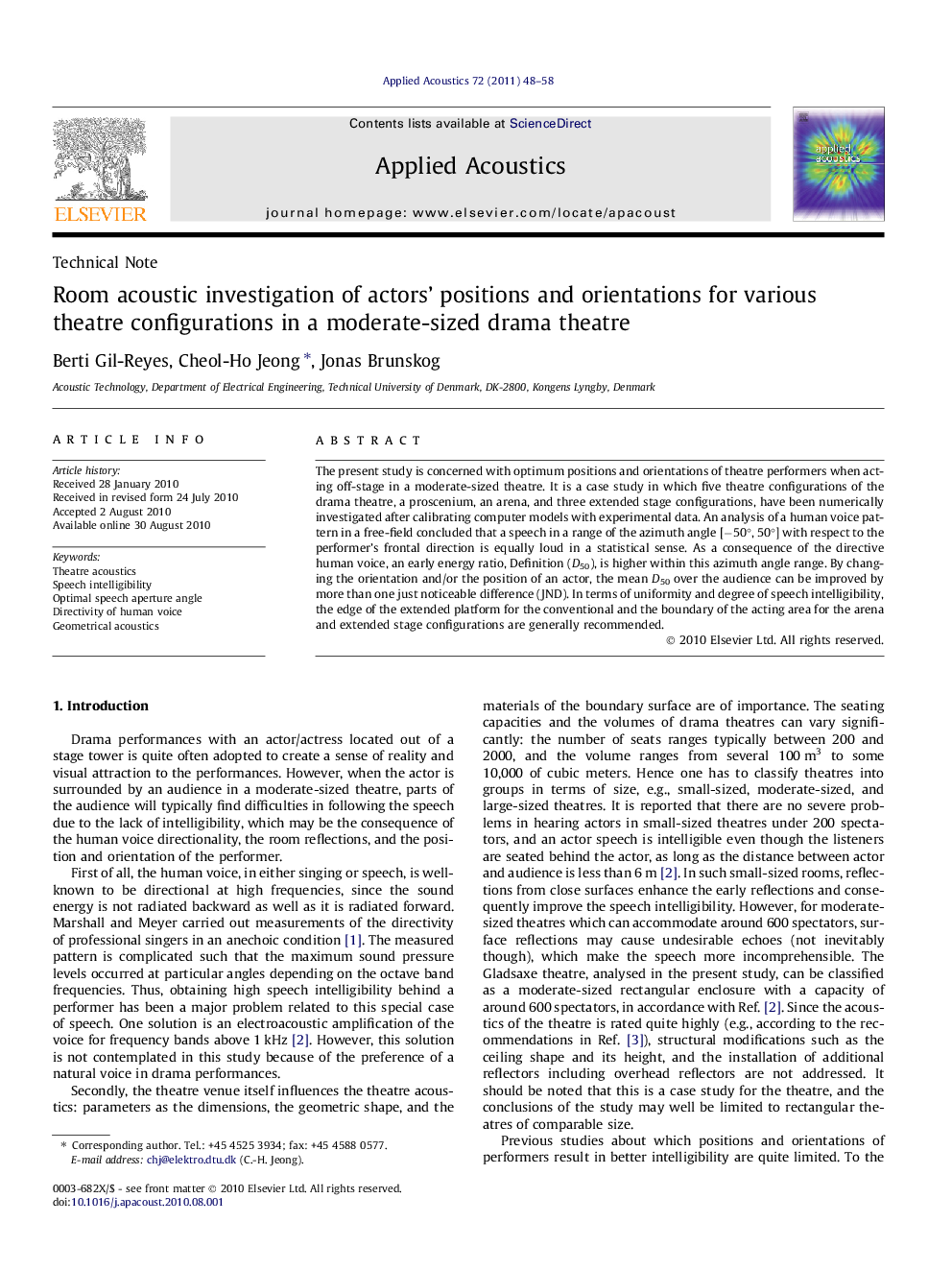| Article ID | Journal | Published Year | Pages | File Type |
|---|---|---|---|---|
| 754952 | Applied Acoustics | 2011 | 11 Pages |
The present study is concerned with optimum positions and orientations of theatre performers when acting off-stage in a moderate-sized theatre. It is a case study in which five theatre configurations of the drama theatre, a proscenium, an arena, and three extended stage configurations, have been numerically investigated after calibrating computer models with experimental data. An analysis of a human voice pattern in a free-field concluded that a speech in a range of the azimuth angle [−50°, 50°] with respect to the performer’s frontal direction is equally loud in a statistical sense. As a consequence of the directive human voice, an early energy ratio, Definition (D50), is higher within this azimuth angle range. By changing the orientation and/or the position of an actor, the mean D50 over the audience can be improved by more than one just noticeable difference (JND). In terms of uniformity and degree of speech intelligibility, the edge of the extended platform for the conventional and the boundary of the acting area for the arena and extended stage configurations are generally recommended.
